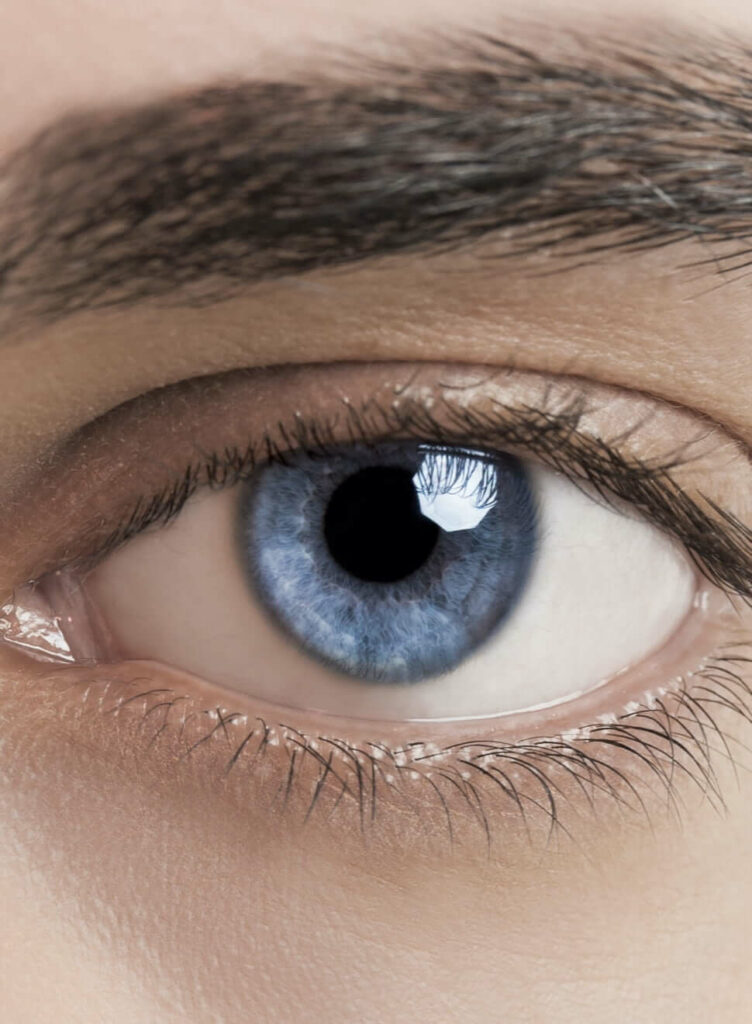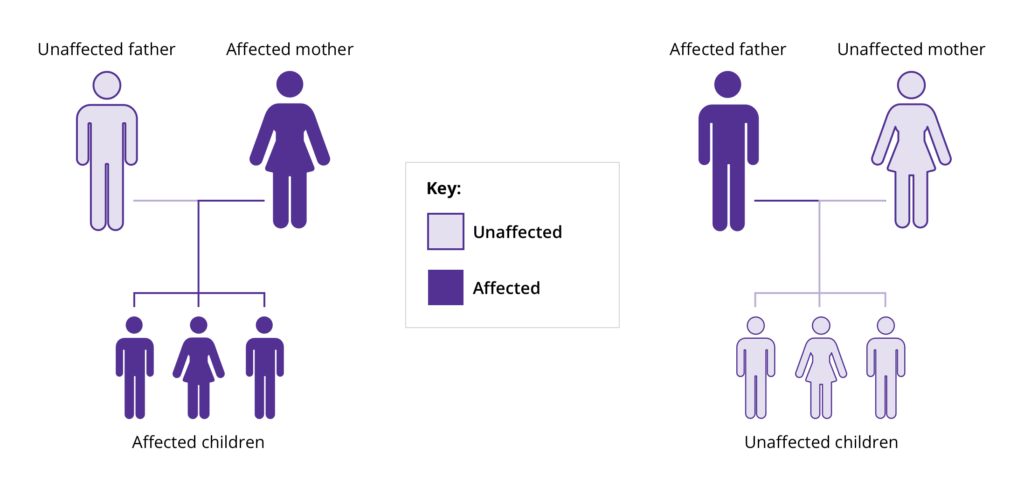
What is LHON?
Leber’s hereditary optic neuropathy or LHON is a rare inherited condition that results in rapid central vision loss.Footnote1,Footnote2 Named after Theodore Leber, who first described it in 1871, LHON affects approximately 1 in 45,000 people in Europe.Footnote2,Footnote3
Symptoms in LHON usually begin with sudden, painless blurring and clouding of central vision in one eye and then both eyes.Footnote3 It results from cell dysfunction in the optic nerve that relays visual signals from the eye to the brain.Footnote3 It affects how patients can see things.Footnote3 Each eye gets worse as the blurry blind spot rapidly expands over 6-12 months.Footnote3,Footnote4 The duration in which the eyesight gets worse varies from a few months to more than two years.Footnote3,Footnote4
Symptoms
LHON begins with the following symptoms:Footnote3,Footnote4,Footnote5
- Sudden central vision loss usually in one eye followed by the second eye within 8 weeks (75% of the cases); or in both eyes simultaneously (25% of the cases)Footnote5
- Painless blurring in the centre of the eyeFootnote3,Footnote4
- Blurring of visionFootnote4
- Loss of sharpnessFootnote5
- Loss of colour visionFootnote4
How LHON impacts vision


Central vision loss is typically the only symptom of LHON
Prevalence
Men are four to five times more likely to be affected by LHON than women.Footnote4 The first signs of vision loss usually appear between the ages of 15 and 35 years.Footnote5 In rare cases, however, symptoms can occur between 2 and 87 years of age.Footnote1 The age of onset tends to be higher in women;Footnote5 LHON shows a marked bias of vision loss in menopausal women.Footnote12
Even if LHON runs in your family, one can’t predict the age at which it might trigger, who would be affected (men or women), or the severity of the vision loss.Footnote4,Footnote5 Additional genetic and environmental factors interact with the primary mtDNA pathogenic variant and influence whether an individual ultimately develops optic nerve dysfunction and visual failure.Footnote4
Knowing the symptoms of LHON can speed up the diagnosis journey
Role of genetics and inheritance
LHON is a rare condition mostly caused by mutations in the mitochondrial DNA.Footnote6 A mother with a mitochondrial mutation passes it on to all her children.Footnote6 However, a father who has LHON cannot pass it on to any of his children.Footnote6 This is because the mitochondria for the developing baby come from the mother’s egg cells and not the father’s sperm cells.Footnote6 So, any mutations in the mitochondria can only be inherited maternally.Footnote6
Mothers with an LHON mutation will pass it on to their children


The mitochondria produce most of the energy that cells need to function.Footnote6 In LHON, these inherited mutations disrupt the mitochondria and cause cells in the eye to stop working or eventually, die.Footnote6
Mutations in one of the three major genes in mitochondria are responsible for LHON in more than 90% of patients.Footnote6 Other rare mtDNA mutations account for a further approximately 5% of the LHON cases.7 In the absence of maternally-inherited LHON, mutations in a nuclear encoded gene, DNAJC30, have also been established leading to an autosomal recessive mode of inheritance for LHON (arLHON).Footnote7
-
The genetic mutation in the mitochondria disrupts the normal functioning of the cells in the optic nerve called the retinal ganglion cells.Footnote9 The human eyes have over a million retinal ganglion cells.Footnote9 These cells process the visual information entering our eyes. They enable us to see things by sending the image to our brain.Footnote10
Although all the cells in the body have the same mitochondrial mutations, LHON damages the cells in the eye.Footnote4,Footnote8 The number of mitochondria in a cell depends on the energy demands of that particular cell, and retinal ganglion cells need a lot of energy.8 Mutations in LHON make the retinal ganglion cells susceptible to mitochondrial diseases.Footnote8 LHON leads to progressive loss of the retinal ganglion cells resulting in significant visual loss.Footnote9
-
Understanding the role of mitochondria in LHON

Mitochondria are organelles within another cell.Footnote9 They have their own set of DNA known as mitochondrial DNA.Footnote9,Footnote11 They are powerhouses that help convert the energy from food into energy the cell can use.Footnote9,Footnote11LHON mutations
Many mutations have been identified in people with LHON. However, approximately 90% of patients affected by LHON have one of the three common mtDNA mutations (m.3460G>A in MT-ND1, m.11778G>A in MT-ND4, and m.14484T>C in MT-ND6).Footnote4 In the absence of maternally inherited LHON, mutations in a nuclear encoded gene DNAJC30 have also been established.Footnote7
The mutations responsible for LHON affect the generation of energy in the mitochondria.Footnote4
Triggers
While women are less likely to be affected, sometimes, menopause or stopping hormone replacement therapies is also known to trigger LHON.Footnote12
Environmental factors could also contribute to vision loss and additional medical problems associated with LHON. Therefore, if you are an LHON carrier, you will be advised of the following:Footnote4
Some drugs are known to cause damage to the mitochondria. Due to this, it might be worth finding out more about these drugs and discussing their use with your treating physician.Footnote4
Avoiding potential risks and triggers could be beneficial
-
Theodorou-Kanakari A, et al. Adv Ther. 2018;35:1510–18.
Carelli V, et al. J Neuro-Ophthalmol. 2017;37:371–81.
Carelli V, et al. Eur Ophthalmic Rev. 2019;13(Suppl 2).
Yu-Wai-Man P and Chinnery PF. Leber Hereditary Optic Neuropathy. 2000.
Karaarslan C. Adv Ther. 2019:36;3299–307.
Fraser JA, et al. Surv Ophthalmol. 2010;55:299–334.
Stenton SL, et al. J Clin Invest. 2021:15;131:e138267.
Meyersen C, et al. Clin Ophthal. 2015;9:1165–76.
Yu-Wai-Man P and Newman NJ. Hum Mol Genet. 2017:26;12–20.
Wienbar S and Schwartz GW. Prog Retin Eye Res. 2018:67;102–17.
Newmeyer DD and Ferguson-Miller S. Cell. 2003;112;481–90.
Asanad S, et al. J Curr Ophthalmol. 2019:31;251–53.
Disclaimer: The information on this website is intended only to provide knowledge of Leber’s hereditary optic neuropathy (LHON). This information should not be used in place of advice from your GP or other healthcare professional. If in doubt, please contact your doctor for advice. This website has been produced by Chiesi Pharmaceuticals. The website has been developed in accordance with industry and legal standards to provide information for healthcare professionals and the general public about LHON. Chiesi Pharmaceuticals makes every reasonable effort to include accurate and current information. However, the information provided in this website is not exhaustive.
Patient & Caregiver: In case you need to report an adverse drug reaction, please refer to your physician, asking him to fill in and submit the relevant case report to the concerned Health Authority, according to the Pharmacovigilance requirements in force in your Country. Nevertheless, please be kindly reminded that each patient can report any such cases directly to the national reporting system.
Healthcare Professional: In case you want to report an adverse drug reaction you become aware of, please report it to your Health Authority according to the requirements set by the pharmacovigilance legislation.
 Global
Global  Sweden
Sweden  Greece
Greece  Norway
Norway 
